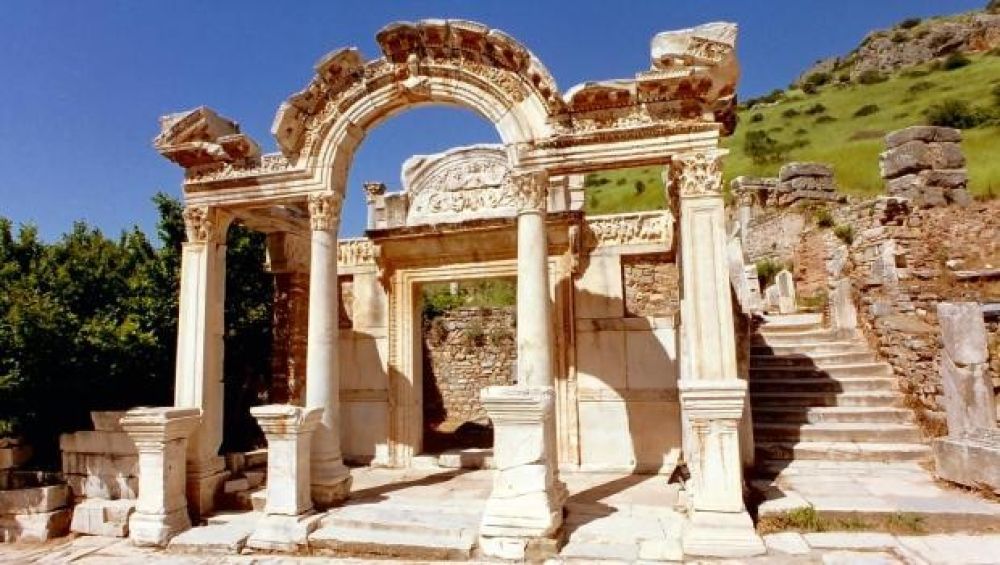

The Temple of Hadrian, located in the ancient city of Ephesus in Turkey, is a significant historical site with a rich history dating back to the 2nd century AD. Although the exact date of construction is unknown, the temple is dedicated to Emperor Hadrian, who visited the city from Athens in 128 AD. Ephesus was once a bustling center for trade and a politically significant city within the Roman Empire, which contributed to the development of its impressive structures, including the Temple of Hadrian.
Over centuries, Ephesus and its structures, including the Temple of Hadrian, faced neglect and decay, especially after the city's harbor silted up and trade declined. It wasn't until the 19th century that Ephesus re-emerged as a site of archaeological importance. Excavations began in the 1860s by British engineer John Turtle Wood and subsequently by the Austrian Archaeological Institute, revealing many of Ephesus' treasures and increasing public interest in its historic value.
As archaeological discoveries continued to unfold during the 20th century, Ephesus became more prominent on the international stage, drawing the curiosity of historians and travelers alike. The restoration of the Temple of Hadrian has been ongoing, with efforts to preserve its intricate reliefs and architectural beauty, thus making it one of Ephesus’s must-see attractions.
In recent years, the Temple of Hadrian and the ancient city of Ephesus have seen a surge in visitor numbers, helped by its recognition as a UNESCO World Heritage Site in 2015. This prestigious status has placed Ephesus on a global platform, aligning it with other significant historical destinations, and encouraging a broader international audience to explore its ruins.
Sustainable tourism has become a leading trend in the tourism sector worldwide, and Ephesus has been adapting to this trend. Efforts are being made to preserve the site's integrity while accommodating the increasing number of visitors. Tourist facilities have been improved, and policies have been implemented to manage the flow of visitors to minimize impact on the site.
Another growing trend in the region is cultural tourism, with travelers seeking authentic, enriching experiences that offer a deep dive into the historical context of ancient civilizations. Ephesus (and the Temple of Hadrian within it) has become a prominent destination for travelers who are looking to learn about the Roman Empire's influence in Asia Minor, the spread of Christianity, and the diverse history of the Aegean region.
From the perspective of digital engagement, social media has had a considerable influence on tourism trends. The Temple of Hadrian's iconic architecture, especially the facade with its decorative relief of Tyche, the goddess of victory, has become a popular backdrop for visitors sharing their experiences online, thus inspiring others to visit.
Moreover, virtual and augmented reality experiences are being developed as a part of the latest technological trends in tourism, allowing for more interactive and informative tour possibilities. These digital advancements enable visitors to envisage Ephesus and the Temple of Hadrian in their original glory, enriching the overall experience and making the site accessible even to those unable to visit in person.
In conclusion, the Temple of Hadrian in Ephesus remains one of Turkey's illustrious landmarks, with a history of tourism that has evolved over centuries. Presently, with sustainable practices, inclusive cultural heritage tourism, and technological integration, it continues to be a beacon of ancient history and a compelling destination for travelers worldwide.